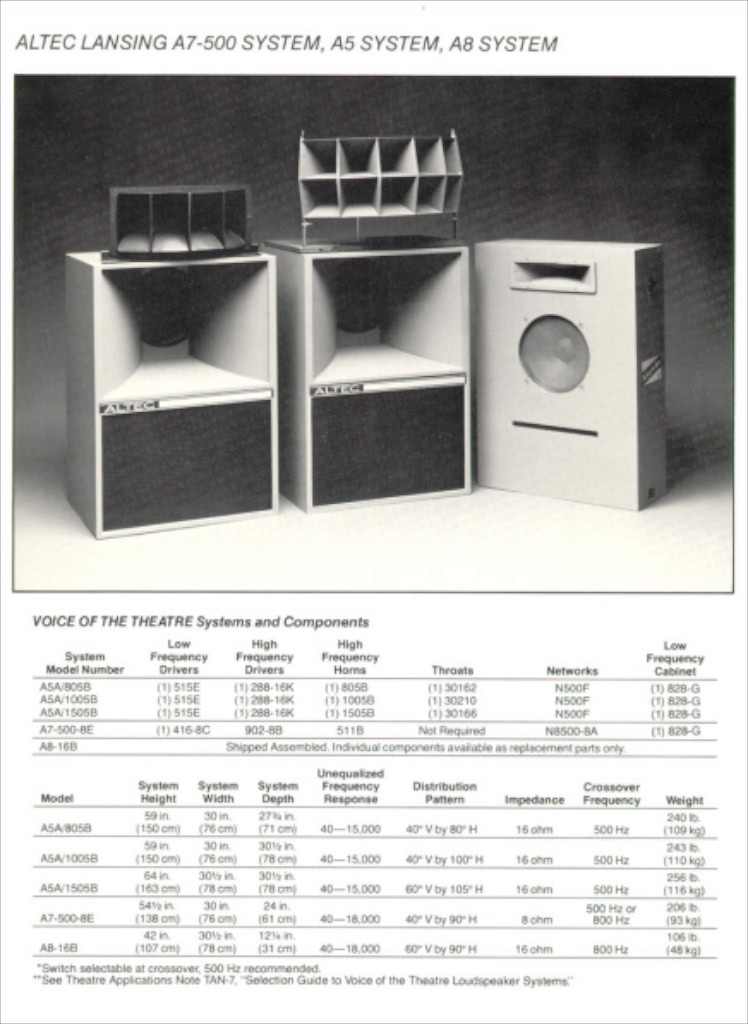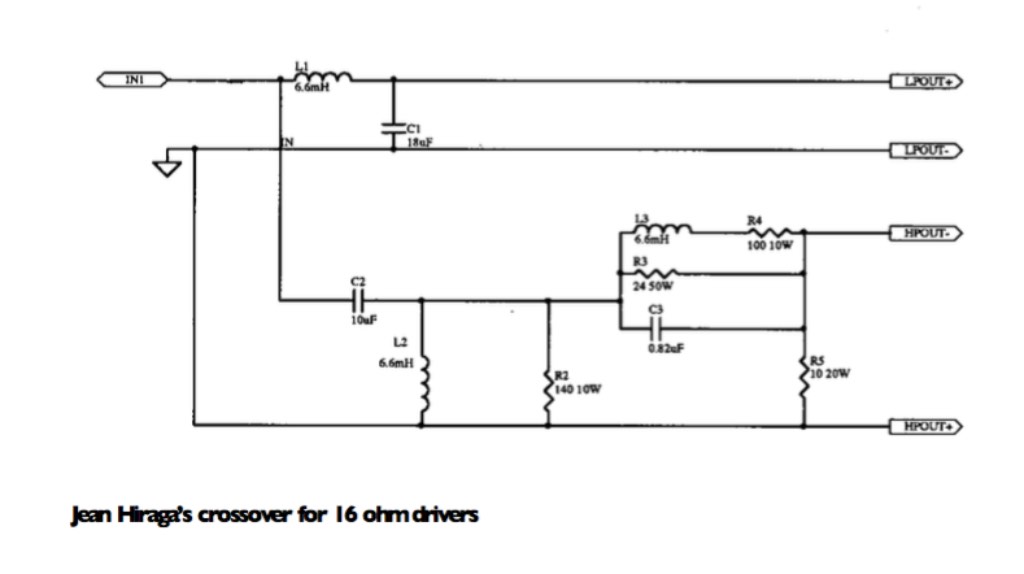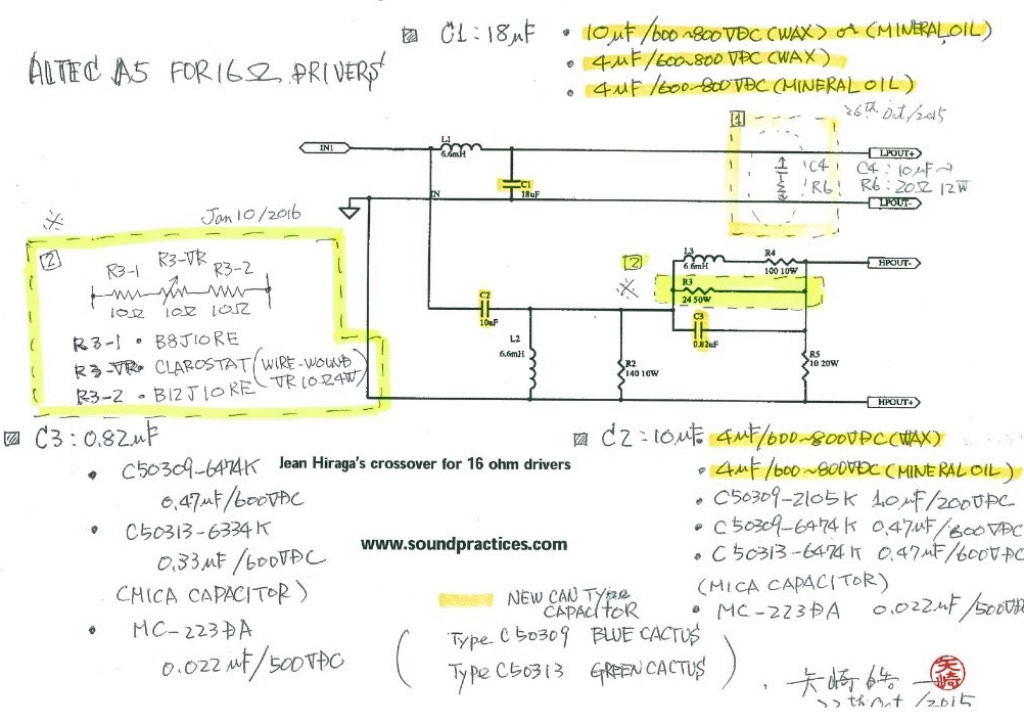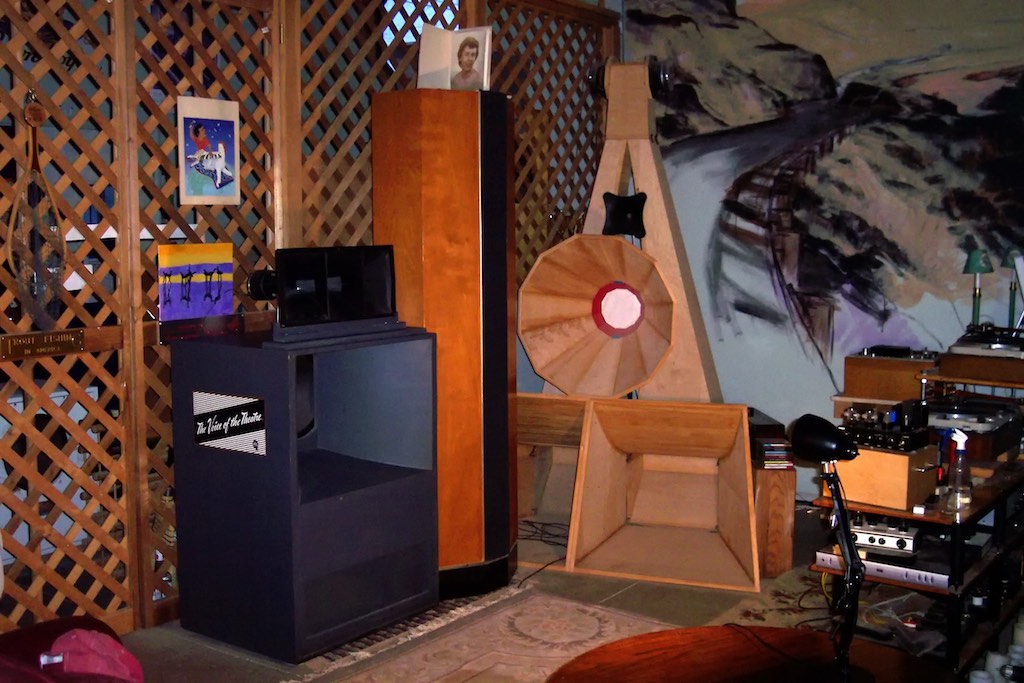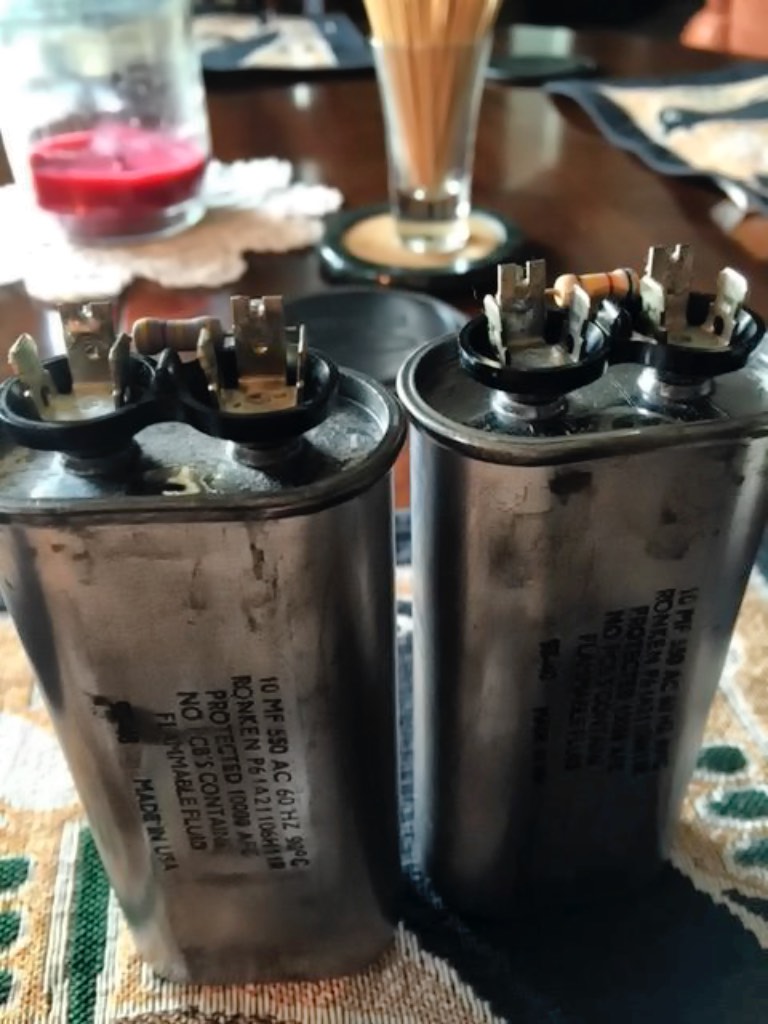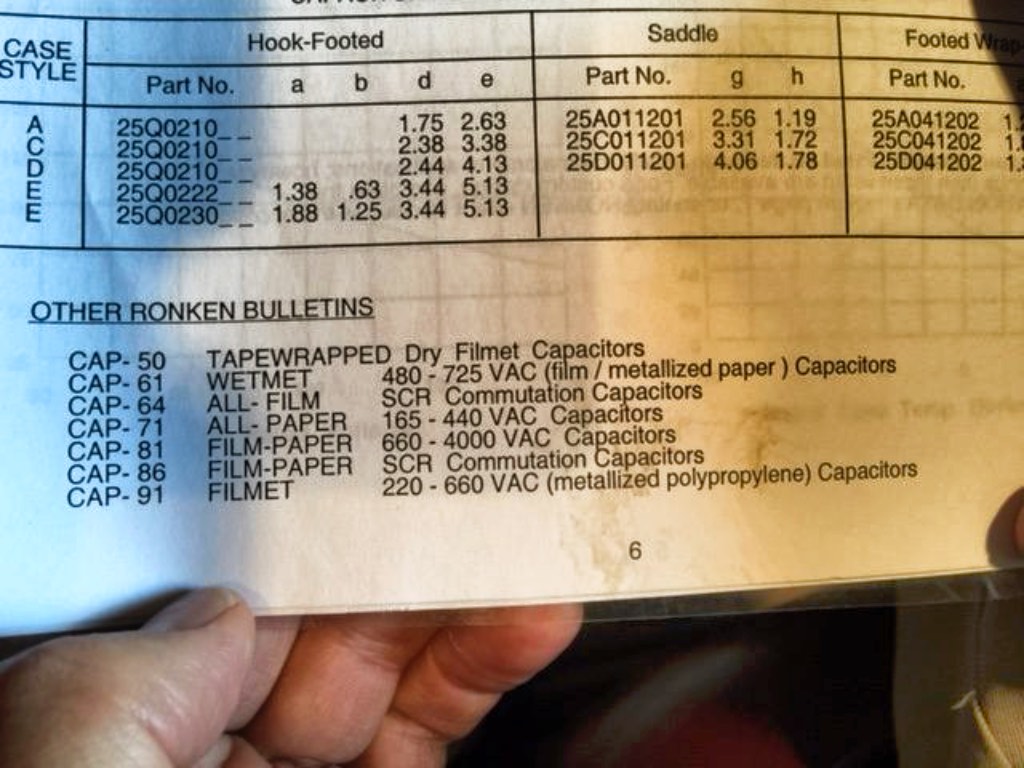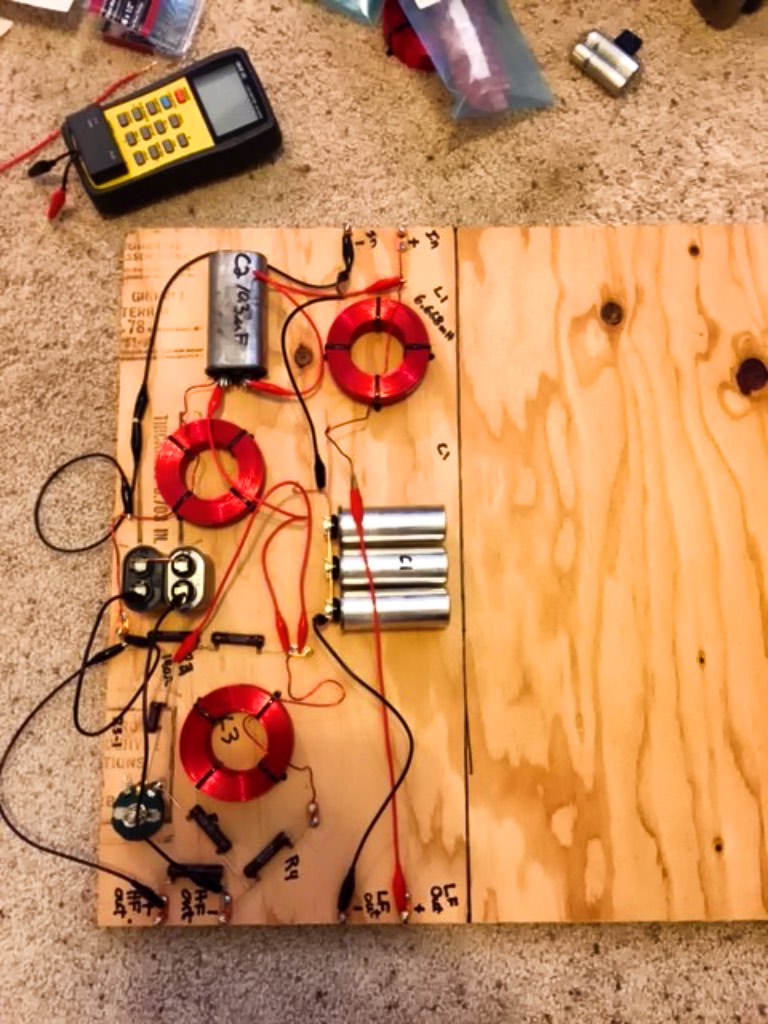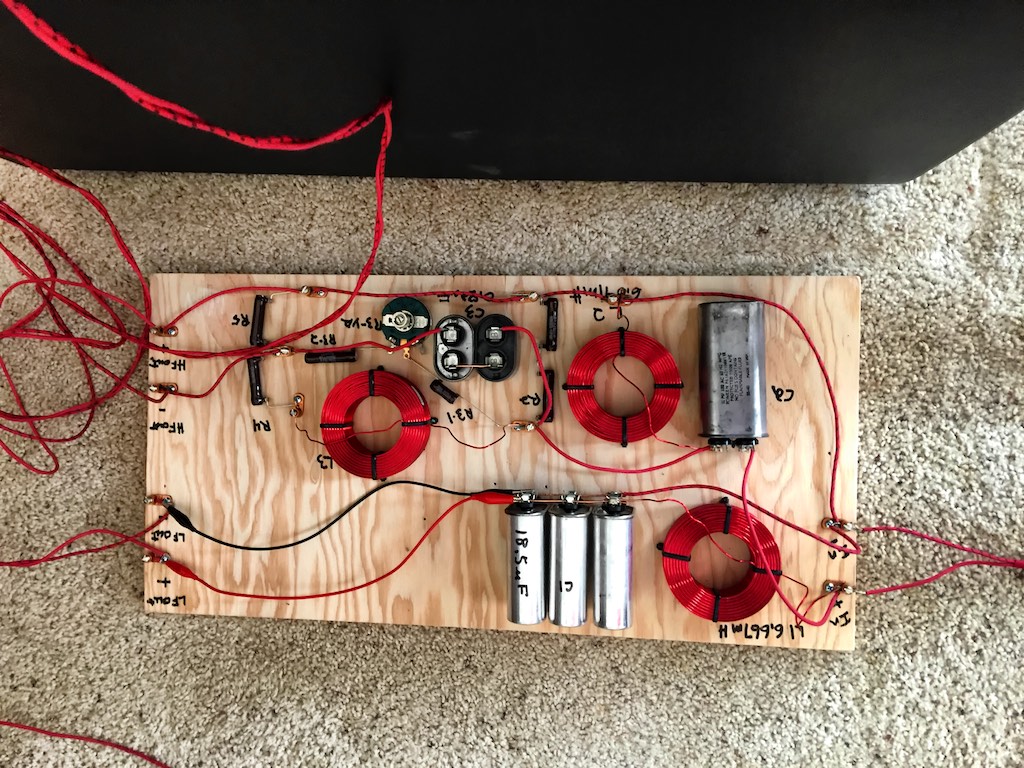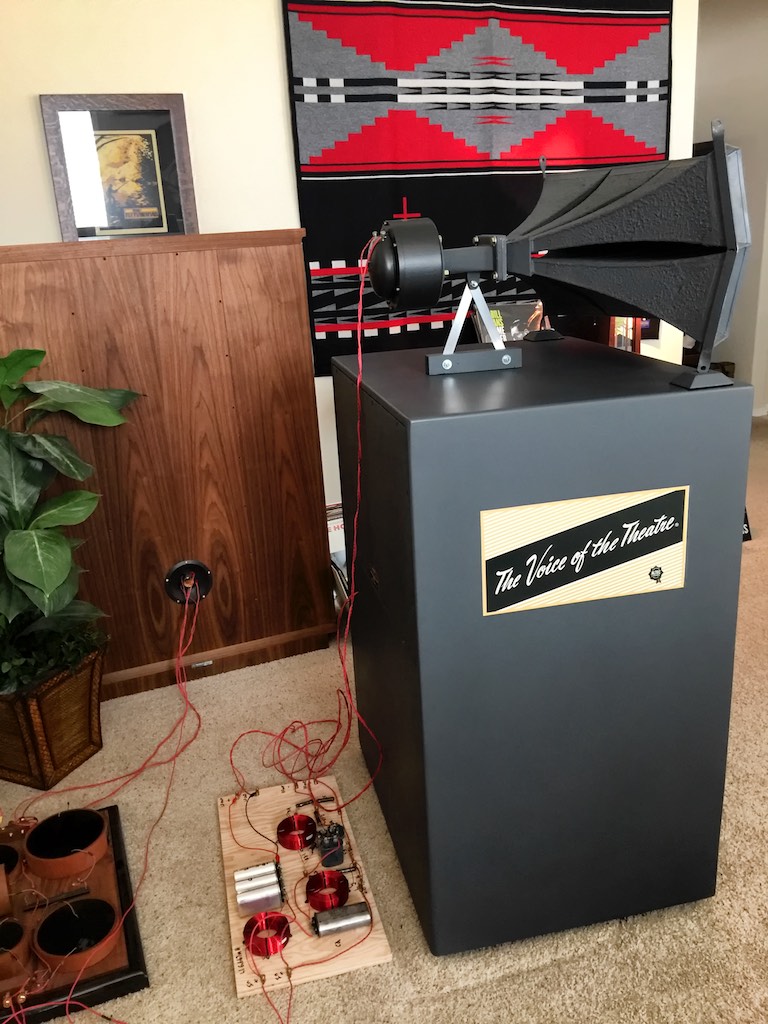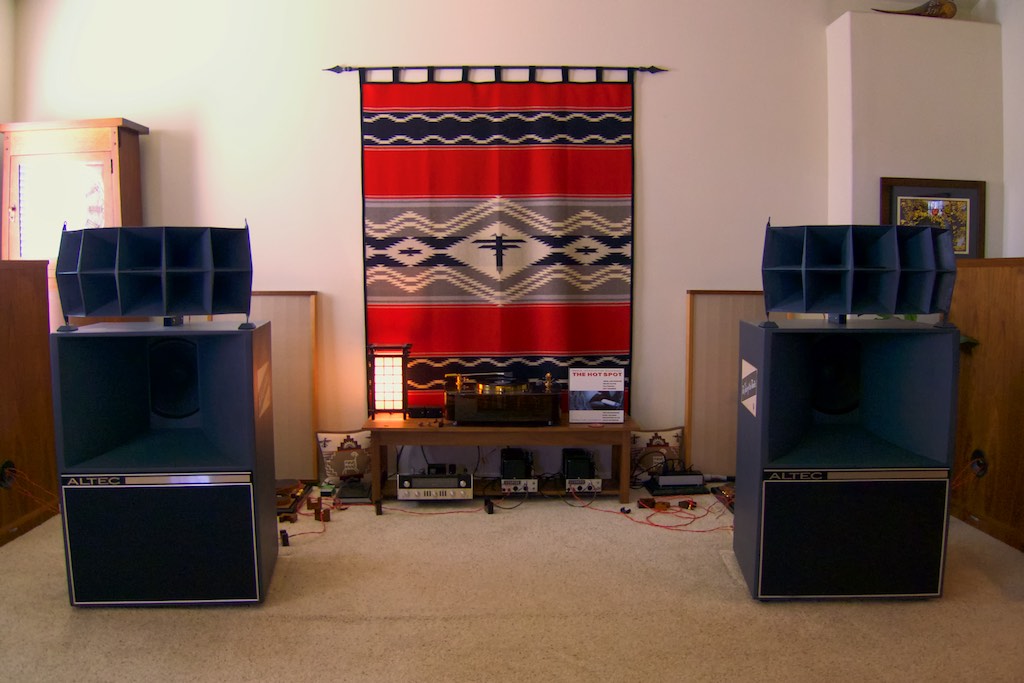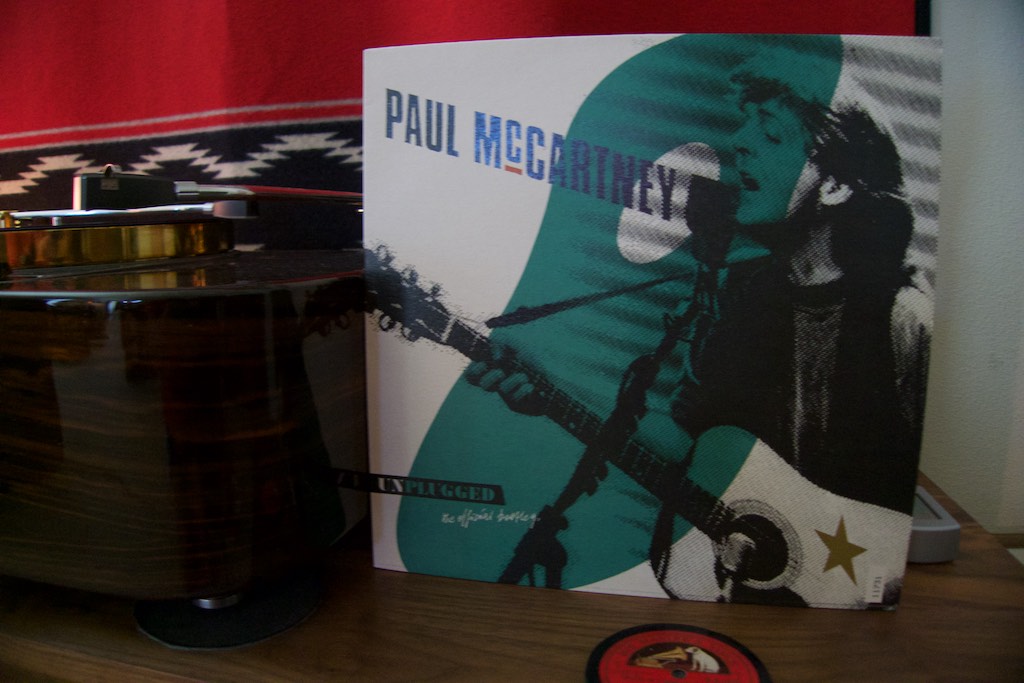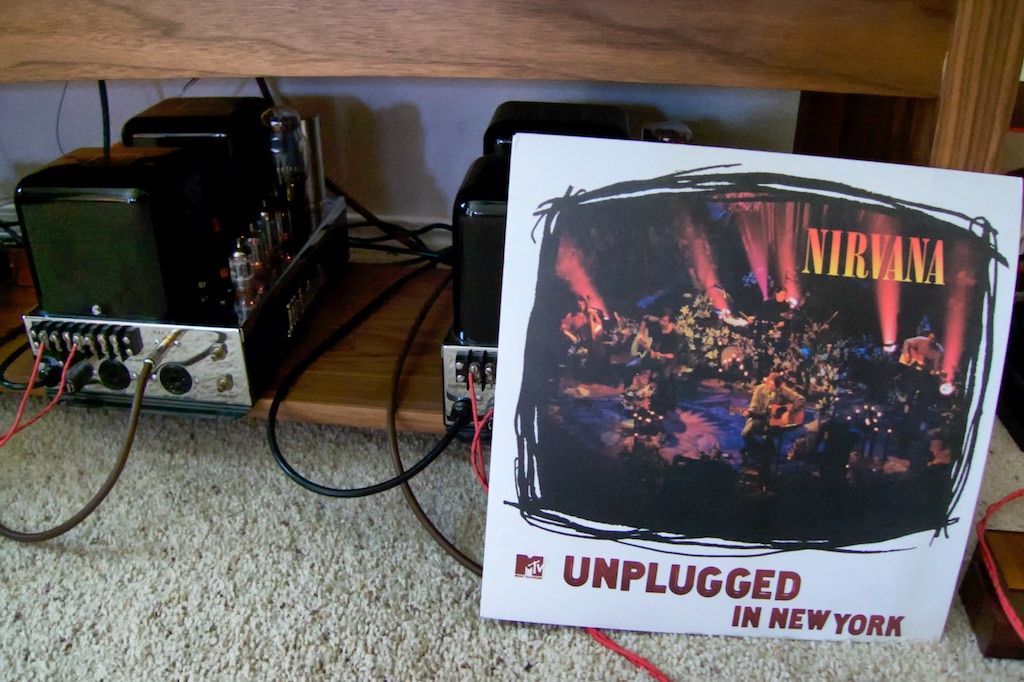As I have gotten older I've found myself becoming more interested in history in general, and our audio history in particular. Over the last ten or fifteen years I've become increasingly fascinated with the vintage Altec Lansing Voice of the Theatre loudspeakers that started their storied journey into theaters back in 1945, as World War II was winding to a close.
I was most interested in the A5 Voice of the Theatre model that was first released in 1945, and which continued to evolve into the 1960's (above center). The A5 had become legendary for its role in the theaters across America, and had quite literally become The Voice of the Theatre in the hearts and minds of American movie goers.
Then later in 1986, the A5 wowed audio enthusiasts when Jean Hiraga did L´Audiophile demonstrations in Paris with it combined with 300B single ended triode (SET) amplification, and listeners praised the combination for its musical realism, exquisite textures & tone colors, and the dynamic truths that were so easily achieved.
What would it be like to hear a loudspeaker whose first model introduction was over 70 years ago now? It was this loudspeaker that I really wanted to hear for myself, so I contacted Gary Fischer and commissioned one of his expert restorations of a pair of Altec A5 Voice of the Theatre loudspeakers.
For my restoration, I chose two 825B bass horn cabinets, two 16 Ohm 515B Alnico low-frequency drivers, two N-500-D ‘Dividing Networks’ (crossovers), two 1005B 10-cell horns, and two 16 Ohm 288C Alnico high-frequency compression drivers, which is a classic Altec-Lansing A5 Voice of the Theatre combination of components from that period.
Pricing for one of Gary's beautiful restorations varies depending on the choice of components and their availability, but mine came to $6525 USD (without shipping) for that particular complement of components, which I though was very fair. You can read a more detailed discussion of Gary's restoration here: Part 1, Part 2, and Part 3.
Gary told me how the A5 Voice of the Theatre loudspeakers were designed to project their high frequency horns out through theater screens into the large space where the audience was sitting in the auditorium, and their bass drivers were designed to couple with and load the theater screen for additional low frequency response into the theater, and their crossovers were designed to provide that sort of equalization.
Nude A5 Voice of the Theatre loudspeakers, with stock Altec crossovers from back in the day, when plopped down in the low volume of a typical listening room are going to sound hideous, as what works well for theater equalization is not going to work in a domestic listening environment.
When Ron and I first listened to the newly arrived pair of A5 Voice of the Theatre restorations from Gary, we listened to them with a vintage pair of Altec N-500-C crossovers, and it was some of the worst sound I'd ever heard coming from a pair of loudspeakers. Both Ron and I ran from the room with our hands over our ears!
I should point out that this is not at all the fault of the A5 Voice of the Theatre loudspeakers, rather it's the theater-style equalization of those early crossovers working exactly the way they were designed to in a theater, which is not at all compatible for a home listening environment.
Fortunately the crossover issue has been solved for us by the afore mentioned Hiraga-san, with his artful crossover design optimized for the A5 Voice of the Theater loudspeakers, which adapts them to a home listening environment perfectly well.
So save your money, and don't order Altec crossovers when you order your A5 (or A7) VOTTs from Gary, and with that money instead build yourself a pair of crossovers like I'm about to describe to you based on the design of Jean Hiraga. The cost will be about the same. I think you'll be amazed at the result, at least I was!
I conferred with Yazaki-san on the Hiraga-san A5 crossovers, and Yazaki-san made suggestions for a couple of modifications.
Unlike the stock Altec crossovers, Jean Hiraga’s A5 crossover design doesn’t include a way to adjust the level of the high-frequency horn so you can more easily match it to a room, a feature which I’ve found to be very handy with the Altec N-500-D crossovers of my ‘Stokowski’ A7 VOTTs.
Yazaki-san proposed a very clever addition to the high-frequency circuit that would allow adjustibility by using vintage Clarostat variable resistors, which he was able to find in Japan, and then sent them to me as part of a ‘crossover kit’ he put together for me (thank you!). In Yazaki-san's modification the 24Ω R3 resistor is replaced by a 10Ω R3-1 resistor, a 10Ω R3-VR (variable resistor), and a 10Ω R3-2 resistor in series. See the left side of Yazaki-san's diagram below for details.
Yazaki-san also suggested we modify the low-frequency section of Hiraga-san's A5 crossover circuit by installing a Zobel network. In this modificationYazaki-san proposed adding a series connected 10uF C4 capacitor and a 20Ω R6 resistor in parallel with the 16Ω 515B Alnico low-frequency drivers, to neutralize the effects of the driver's voice coil inductance for improved performance. You can see this modification as inset 1 in the upper right-hand side of Yazaki-san's diagram below.
After my post announcing the commencement of my Altec-Lansing A5 Voice of the Theatre loudspeakers crossover project after a six-month delay, I now have received all the parts I need to get started, and have done a first iteration of bread boarding a pair of crossovers, albeit with some deviations from Yazaki-san's schematic due to a bit of intervening serendipity.
That intervening serendipity came in the form of Pete Riggle. As I reported in my last post on vintage tone I had asked Ron, Yazaki-san, and Pete for capacitor recommendations for the capacitors I still needed for the crossover. Very atypically neither Ron or Yazaki-san responded to my request for advice on capacitors, but Pete Riggle did (it turned out Ron's computer melted down and he lost a bunch of emails in the process, so Ron was out of communication until I called him. I never did hear back from Yazaki-san, so we hope he is ok and happily listening to music somewhere).
Back story: Pete was impressed after hearing my 'Stokowski' A7 VOTTs and wanted to try a pair for himself. It turns out that Pete's friend Harry came by a pair of well loved Altec A7's that were decommissioned from a church, and are now under Pete's care.
Pete adapted the 8Ω version of Hiraga-san's A5 crossover to his A7 VOTTs, using some ‘new’ vintage capacitors he discovered. This turned out to be serendipitous for yours truly, who needed to get some advice for the rest of the capacitors needed for my Hiraga-san inspired crossovers.
I told Luke part of the Peter Pan story about this in a comment:
Hi Luke,
I was absolutely blown away by Pete Riggle’s A7 VOTTs last week. Pete built a variation of the Hiraga crossover that he adapted to the A7’s, and he used iron core inductors, so you may be on to something there. Pete’s A7 system is one of the best hi-fi systems I’ve ever heard. It was love at first listen for me.
Pete also has some capacitors that he’s discovered that area really something special, and that is part of his secret for good sound too, I think. It doesn’t hurt that Pete has six decades of experience modifying and designing loudspeakers, and once owned a loudspeaker company.
His A7’s are rich, warm, musical, and utterly captivating to listen to music with. If I can get my A5’s sounding that good I’ll be in heaven!
Best,
Jeff
What I didn’t go into detail about in my response back to Luke was the nature of the capacitors Pete wanted me to hear in his Hiraga-style crossovers for his A7 VOTTs.
If you’ve read the comments here at Jeff’s Place carefully over time, you may remember Pete Riggle confessing his fondness for Ronken P61 style of industrial capacitors. They’re big, clunky looking, rugged industrial capacitors that use ‘wetmet’ film & metalized paper in oil (see the photo of the Ronken catalog page below). They are also relatively inexpensive out at Tedss.
Ronken (and other companies) made/make these style of rugged industrial capacitors, and they’re commonly referred to as ‘motor run’ capacitors.
The Ronken P61 ‘wetmet’ oil-filled capacitors have been out of production for a while now, and getting harder to come by, and they have been replaced by current production ‘filmet’ Ronken P91 series capacitors, which I think (not sure) are a metalized polypropylene in-oil capacitor.
Ronken also made ‘all-film’ P64 series industrial commutation capacitors, the ‘all-paper’ in-oil P71 series of industrial capacitors, P81 series of ‘film-paper’ in-oil industrial capacitors, and the P86 ‘film-paper’ in-oil industrial commutation capacitors.
Well it turns out that these early Ronken P61 (and other) industrial motor run capacitors may very well be the Black Beauty, Bumblebee, and Tropical Fish tone capacitors of the industrial capacitor world. From what I have heard so far, these crazy industrial ‘motor run’ capacitors have absolutely gorgeous vintage tone.
Pete suggested I start with the Ronken P61 ‘wetmet’ caps for my A5 VOTT crossover project to get a feel for what they can do, and given what I had just experienced at Pete’s place, I ordered up what I needed from Tedss lickety split. Tedss didn’t have the P61’s in all the values I needed, but they had most of them. For the P61’s values they didn’t have at Tedss, I ordered some similar capacitors with the values I needed. Here's what I ended up using for capacitors:
- C1: For C1 I needed two 18uF capacitors, so I ordered six 6uF Ronken P61A23605H02 capacitors, ($13.20 each) with three each connected in parallel to give a C1 of 18uF for each crossover channel. Total cost with shipping was $94.93 USD.
- C2: For C2 I needed two 10uF capacitors, so I ordered two 10uF Ronken P61A21106H11R capacitors ($22 each). Total cost with shipping was $56.40 USD.
- C3: For C3 I needed two 0.82uF capacitors, so I ordered two each of 4.5uF CDE KKSF44P455QP1 capacitors ($5.50 each) and 1uF CDE KKNP66U105QPI capacitors ($12 each), that I connected in series to give two C3's of 0.818uF capacitors. Total cost with shipping was $47.40 USD.
- C4: The C4's are for the Zobel networks, so I ordered two 10uF CDE KKSM66U106M3E capacitors ($16.50 each), with a total shipped cost of $33 USD. They haven't arrived yet, but should be here soon.
I thought it would be fun to try these first, then later I can compare them with the Arizona Capacitors & SPEC Ruby-Mica capacitors combination that Yazaki-san sent to try for C3.
I retrieved the breadboards from the garage that I used for the Duelund-Westminster crossover project, and laid out a crossover. Those Duelund components are huge, so the breadboard was twice the size it needed to be for the A5 VOTT crossovers.
I took a quick trip over to Pete's so he could cut the breadboards in half for me so they would be a more suitable size to work with, then I got back to work breadboarding the crossovers. Thanks Pete!
I wired my A5 VOTTs'16 Ohm 515B Alnico low-frequency drivers internally with Western Electric WE16GA for that desirable vintage tone, and used a run of WE16GA from the 16 Ohm 288C Alnico high-frequency compression drivers to the crossovers. I also wired the breadboarded crossovers with WE16GA, save for where the Zobel network will go after the rest of the parts arrive, which is connected with alligator clip connectors for the moment.
After I got everything all wired up on the breadboards, I moved my very hefty Westminster Royal SE loudspeakers to the sides of the room, and then moved the A5 Voice of the Theatre loudspeakers into place and attached the breadboarded crossovers.
After I got everything in place I warmed up the system and began to play music while writing up this blog post for you. Keep in mind that these elderly A5 Voice of the Theatre loudspeakers haven't played music for a very long time (Gary could probably tell us how long), they have new diaphragms on the compression drivers that need some break-in time, and the crossovers have never seen a music signal go through them until this moment.
Preliminary Listening Impressions
I've been listening to music all morning while writing up this blog post, and my A5 Voice of the Theatre loudspeakers are sounding ridiculously good!
Like Pete's A7's, the A5's are rich, warm, musical, and utterly captivating to listen to music with. In fact, they're sounding so good with the Hiraga-san inspired crossovers, from a musical standpoint I'd say they are among a handful of the best sounding loudspeakers I've heard, which is sort of remarkable given I haven't even started to optimize them.
My A5's sound very good, but they don't really sound like Pete's A7's. The A5's and A7's seem to inhabit two delicious parallel universes. I'll look forward to getting Pete over here to give them a listen and get his take on things, and to hear what sort of advice he might have for me on further optimizing the A5's. Iron core inductors like Luke recommended? (Hey Luke, what iron core inductors are you using?)
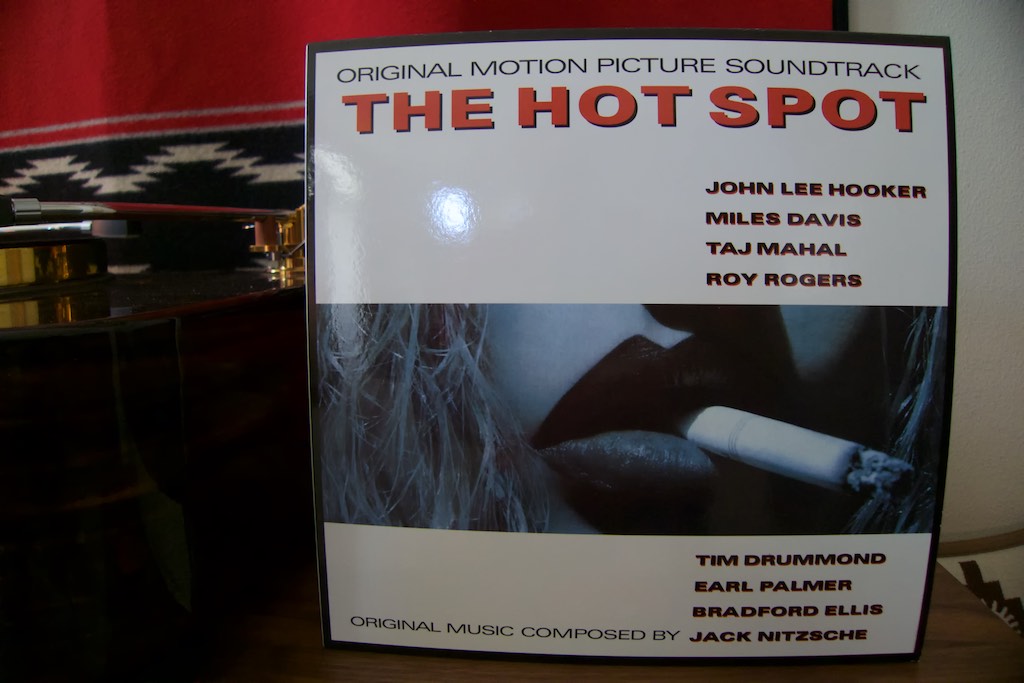
The Hot Spot soundtrack with John Lee Hooker, Miles Davis, Taj Mahal, Roy Rogers, et al, Analog Productions 45RPM.
For an example, with The Hot Spot playing on the turntable, John Lee Hooker, the guitars, the bass, Miles Davis' trumpet, and the drum kit, all sound like they are sitting here in the room with me, it's so tangibly present. Along with their rich, warmish, and liquid presentation, the A5's with the Hiraga-san inspired crossovers are remarkably transparent (which surprises me), but in a very naturally detailed sort of way, and throw a big billowing sense of space.
Timbral textures are extremely natural & nuanced, and the tone color is vivid and remarkably lifelike. The A5's seem very well balanced top-to-bottom in my main room, so perhaps I need not have been worried about adjustibility. The low-end has power & impact on bass & drum hits, the mid-range is utterly seductive & nuanced, and the highs sound silky smooth.
On The Hot Spot the A5's are positively breathtaking! The Hiraga-san inspired crossovers with the Peter Pan capacitors really excel in their ability to relay the artistry of the musicians on the Hot Spot, and the emotional impact is staggering.
I got out some average recordings of some of my favorite music to see how the A5's would fare with a challenge, like Paul McCartney's Unplugged, and Nirvana's Unplugged In New York.
The McCartney Unplugged LP sounds better than it has any right to with the Hiraga-san inspired crossovers feeding the A5 Voice of the Theatre loudspeakers. There is a very uncanny 'Real Sound' aspect to the reproduction, as Yazaki-san would say, and it is almost eerie, yet incredibly beautiful, and emotive, like being there at a concert. Again, in McCartney's Unplugged, I'm hearing the same sort of truth of timbre, gorgeous textures, and deeply saturated tonal colors from instruments like I did on The Hot Spot, and McCartney's voice sounds rich and expressive, just as John Lee Hooker's did. Truly, the A5 Voice of the Theatre loudspeakers are capable of a magic that places them solidly in 'super speaker' territory, for the very fair price of around $6500.
If you're a lost boy and need to come home and enjoy a little music in a way that won't break the bank, I can heartily recommend a pair of Altec A5 Voice of the Theatre loudspeakers with Hiraga-san inspired crossovers & Peter Pan capacitors (you can probably tell I'm having fun with this, but man, this crossover with the motor run caps is sounding gorgeous!).
Washington State grunge band Nirvana's Unplugged In New York was another musical treat through the A5 VOTT's, with Kurt Cobain's raw tortured vocals evoking awe in me as I sat and listened. I'd love to see this get the Chad Kassem 45RPM treatment, in fact I wish Chad would do s series of reissues of 45RPM LPs from the Unplugged performances, they were truly wonderful musically.
Ok, that's a couple snippets from the bunch of albums I listened to this morning, but you get the idea, the A5 Voice of the Theater loudspeakers with Hiraga-san inspired crossovers & motor run capacitors sound fantastic and make music incredibly fun & satisfying to listen to.
Consider this post just a teaser, as I've got a lot more I want to do with these speakers and crossovers, but I feel very, very, fortunate that they're working this well at this early point.
I'll be adding in the Zobel network Yazaki-san suggested when the capacitors for it arrive next week, and will report back on that. I'm not sure I've got the Clarostat working the way it's supposed to yet, as the adjustment range doesn't seem to have much affect, so I'll be investigating that further as well.
I'll also be comparing the C3 combination of Arizona Capacitors & SPEC Ruby-Mica capacitors that Yazaki-san sent to the motor run capacitors that I put in there for now, so that should be fun, and Pete also wants to run some SPICE modeling on the crossover to see what that reveals.
Once I get everything dialed in the best I can, then I'll get everything mounted in some respectable looking chassis.
As always, thanks for stopping by, and may the music playing make you happy!




